July 22, 2016
Greenland, pt. 7 – Glacialicious.
As promised yesterday, here come a LOT of photos…
So get the popcorn in plus your beverage of choice, and we’re off…
With all the mini-bergs bobbing in the sea, the boat reduces its speed to better navigate them…
Waterfalls!
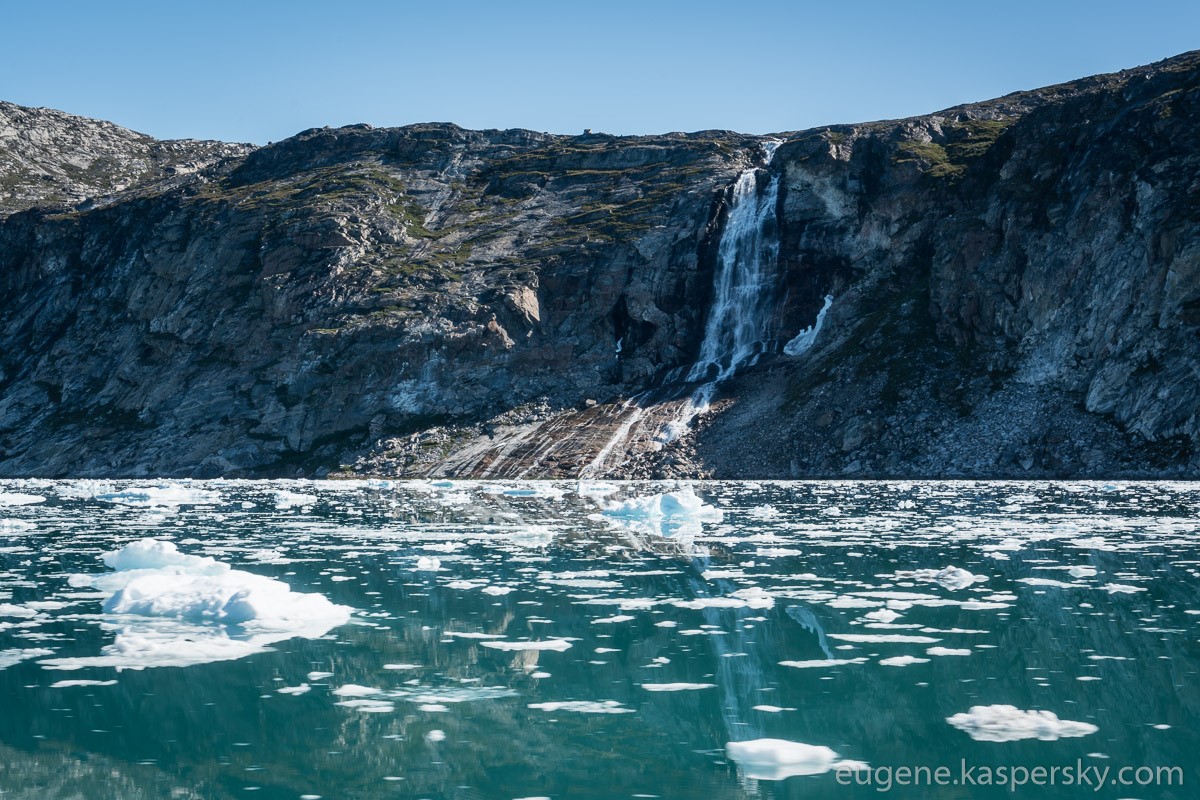
A ‘water taxi’ races past!
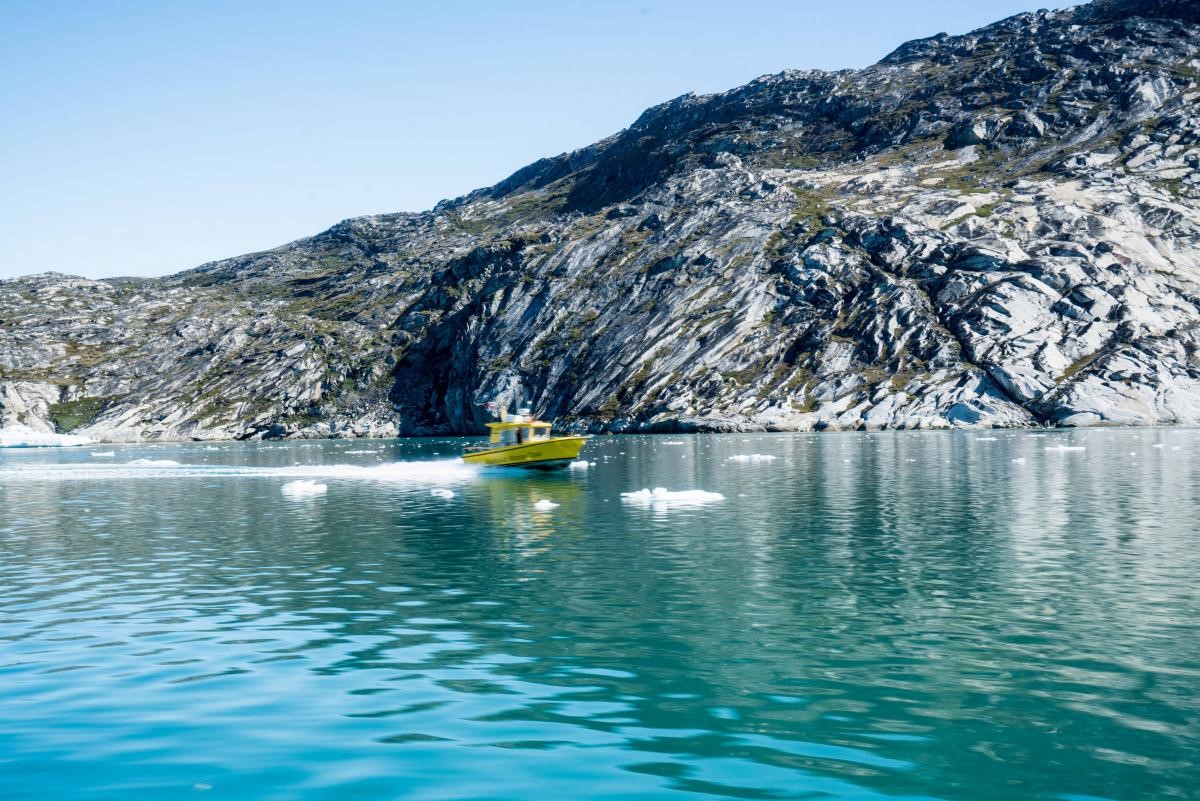
Icebergs are one thing; a full-on – full-size – glacier, is quite another! Here it comes:
A glacier. At last! One of those things that like to mold mountains with their steady movement over millennia. Awesome phenomena.
Can be viewed (day or night, for it never gets dark up here this time of year :) from the boat or from land – from a cabin at the single hotel here. Cozy!
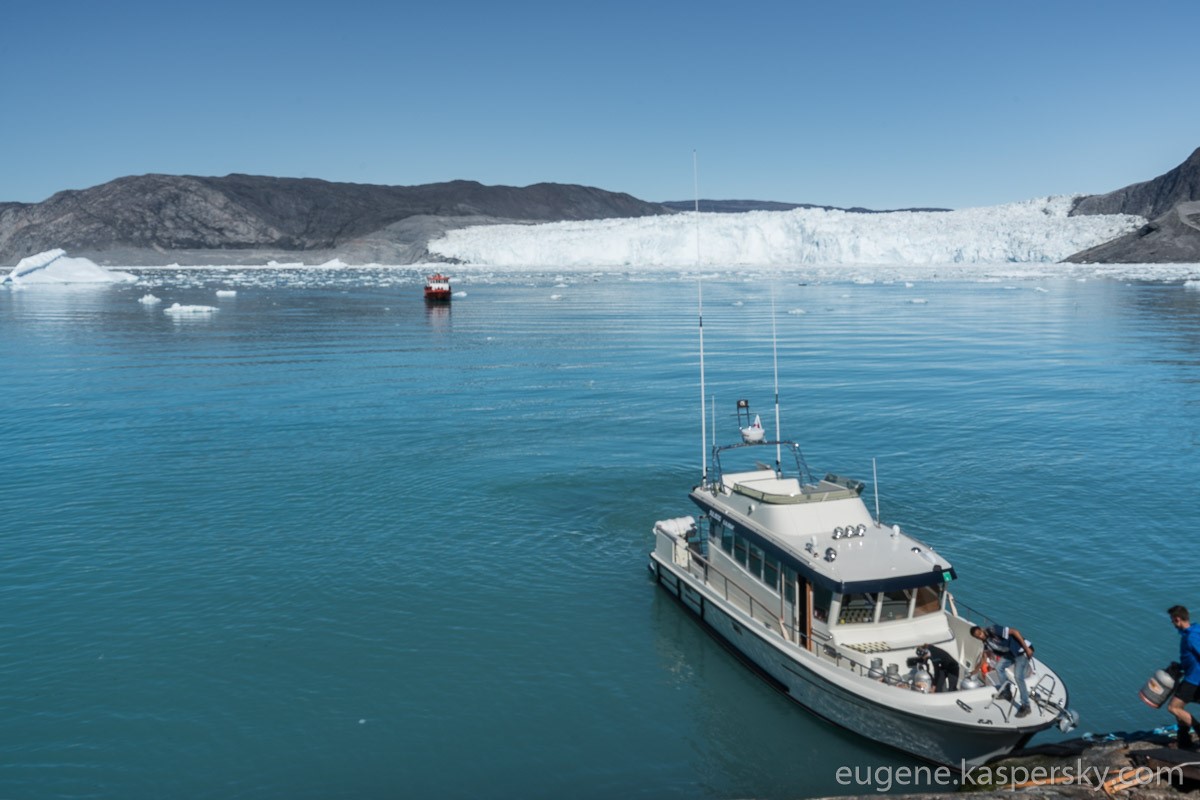
(A big thanks to Touring Greenland for the info, btw (I didn’t check other sources the Internet).)
This here glacier is called Eqip Sermia, and it turns out it’s by far the largest of them all. Our guides gave us some facts and figures about the glacier, which, as can be expected, got me all curious. You’ll see what I mean…
So, according to them, from 1912 to 2007 the glacier moved down the valley it is housed in at a speed of two to three meters per day. However, in 2014, measurements showed a whopping 11 to 15 meters per day.
More numbers: The highest point of the glacier above sea level – ~200 meters; the average ‘depth’ of the glacier under the sea (which lies on the seabed) – ~100 meters. And the length of it – 3500 meters. So that gives us, if my calculator isn’t telling fibs:
300m x 13m/day (avg.) x 3500m = ~14 million cubic meters of ice per day; that is, ~570,000 cubic meters per hour! More than half a million cubic meters of ice!!! Hold on. Surely that can’t be right?
So, what can I compare that with to make it more tangible? Let’s see…
A railroad freight wagon holds 100 tons of cargo. So that makes 5000 wagons per hour. The length of such a wagon is approximately 20 meters. That means the ‘shipment’ of ice in railroad terms would be… a train made up of wagons stretching 100km – every hour! Now that makes grasping the vastness involved a bit easier. Oh my goodness!
Ok, that’s the figures. But sometimes you can see glacial-icebergism too – at least on video, like this or this, both shot in Greenland, the latter – near Ilulissat. Incidentally, it was an iceberg hailing originally from Greenland that collided with the Titanic.
The sound of a huge chunk of ice breaking off an even bigger one is reminiscent of huge old canon firing. And the ice falling into the water (or rising from the seabed) can cause a mini-tsunami with waves up to 20 meters high. They even have signs up here to show you how far is deemed a safe distance from the sources of such tsunamis.

Details about glacial/icebergial life can be found here on the walls on plaques. I couldn’t find any such detail on the Internet, but I didn’t try all that hard.
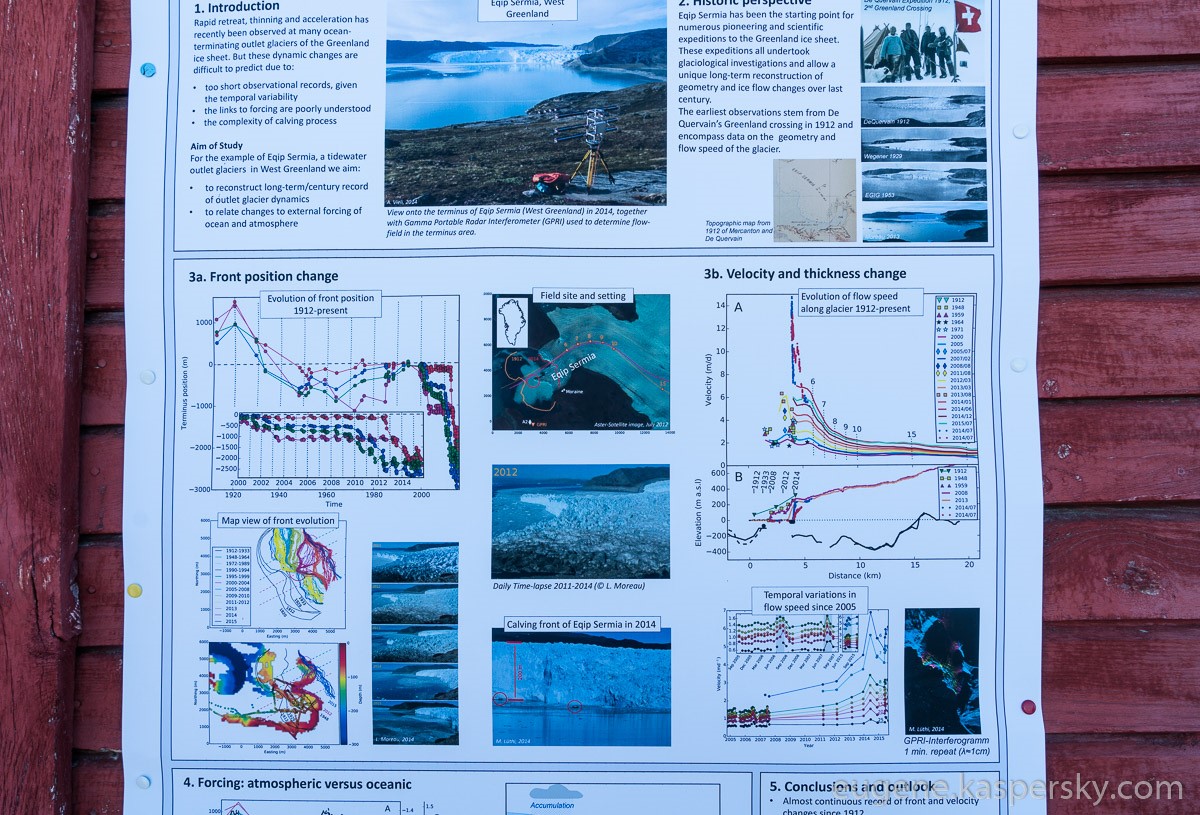
Observing the icebergs’ movement to and fro here and the occasional din of a breaking-up iceberg or glacier is pure blissful joy. You could keep doing it for days…
Here’s a signpost indicating the various glacial highlights if you want a closer look…
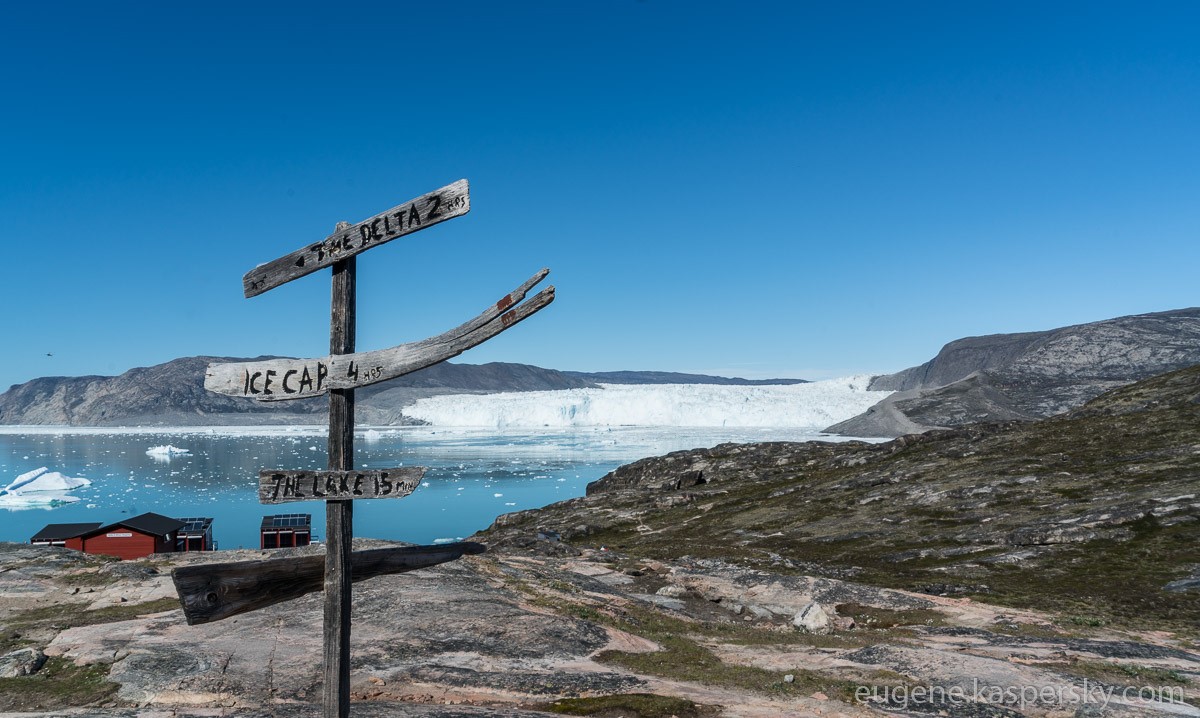
But alas we didn’t have enough time for walks – our chopper had already returned to whisk us off for more mind-blowing aerial views of all this glaciality…
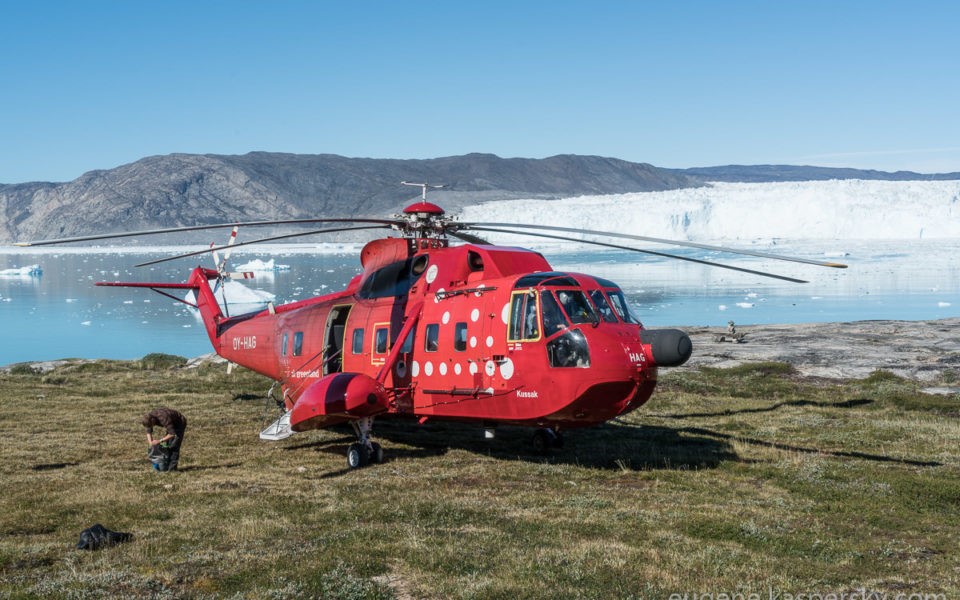 Bright red – naturally :)
Bright red – naturally :)

Off we fly!
Run out of popcorn? Well that’s just too bad: go get more! Plenty still coming up…
Here’s the glacier from up above:

In the summer here the bright sun causes plenty of melting of the ice, causing water to make streams – and in some places shallow lakes atop the glacier:
We land on the glacier. Time for walkies!
Those strange holes… Turns out they’re made from dust that settles on the glacier. The dust gets warmed up in the sun, and then bores holes in the ice. Elsewhere streams bring all the dust together to form black sandy patches.
To the touch the dirt feels like freshly ground coffee beans. Our guides told us how the dirt was studied and it was found that it comes to Greenland from all over the world – even from the Sahara. They also informed us how most of the dust – 95% – is of natural origin (deserts and volcanoes, meteorites and other cosmic space), leaving just 5% being man-made.
Ooh, what a pretty river…

So clear and blue…
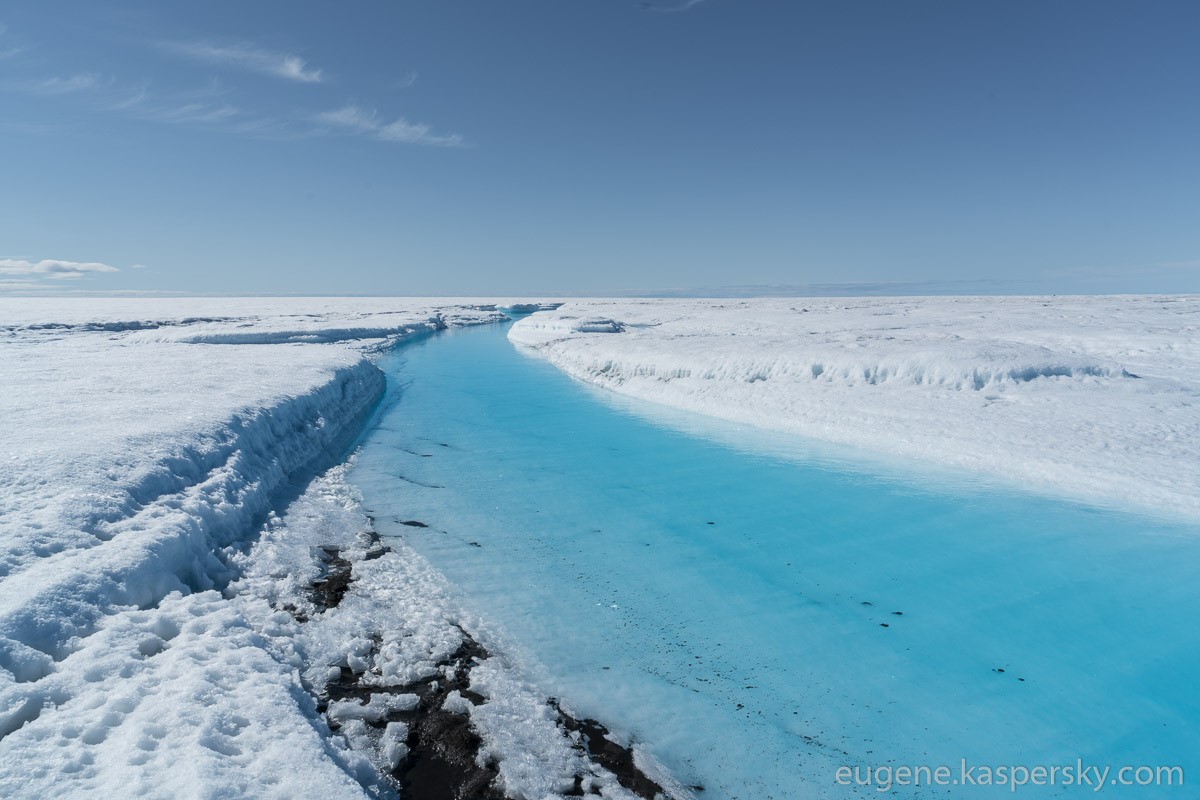
So inviting…
Yes – got to be done…
Once they’d seen it done by moi, our guides couldn’t resist rising to the challenge! So we had a race – Greenland vs. Russia!
Invigoratingly intense. Very cool: in both senses of the word :).
Alas, the home team won. Still, they would: they know the territory ).
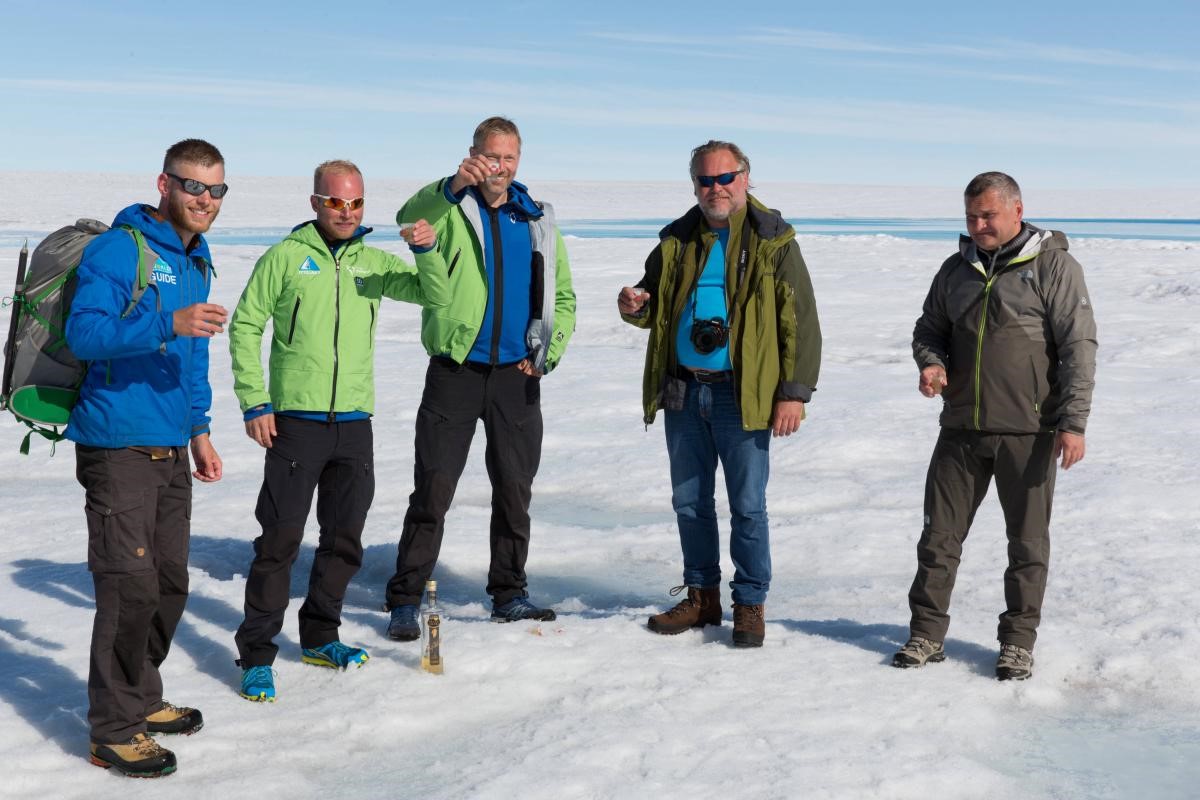
Actually, they’d never swum in the rivers here, our guides. And they’d never known anyone jump in before in their swimming kit! After having a go with us and realizing it’s possible, they’ve since added ‘taking a dip’ to the list of ‘fun things to do’ while on the glaciers :).
Note – if you do ever come to Greenland (not many of you, I know), and to a glacier in a helicopter (not many of you, I know), and decide to have a swim (anyone left?), er, wear some flop-flops: the ice underneath is – you guessed it – freezing cold. Another thing: use a safety rope, just in case.
We were back into the chopper and onward…
Here are some whales. However, they were quite a way off so we couldn’t see them clearly. We got much better views of whales in Hawaii.
Well, that’s your lot folks for glaciers and icebergs, and almost your lot from Greenland. There’s just one PS left to go – about the local lodgings and sights and sounds in and around a Greenlandic town: coming up next!…



























































